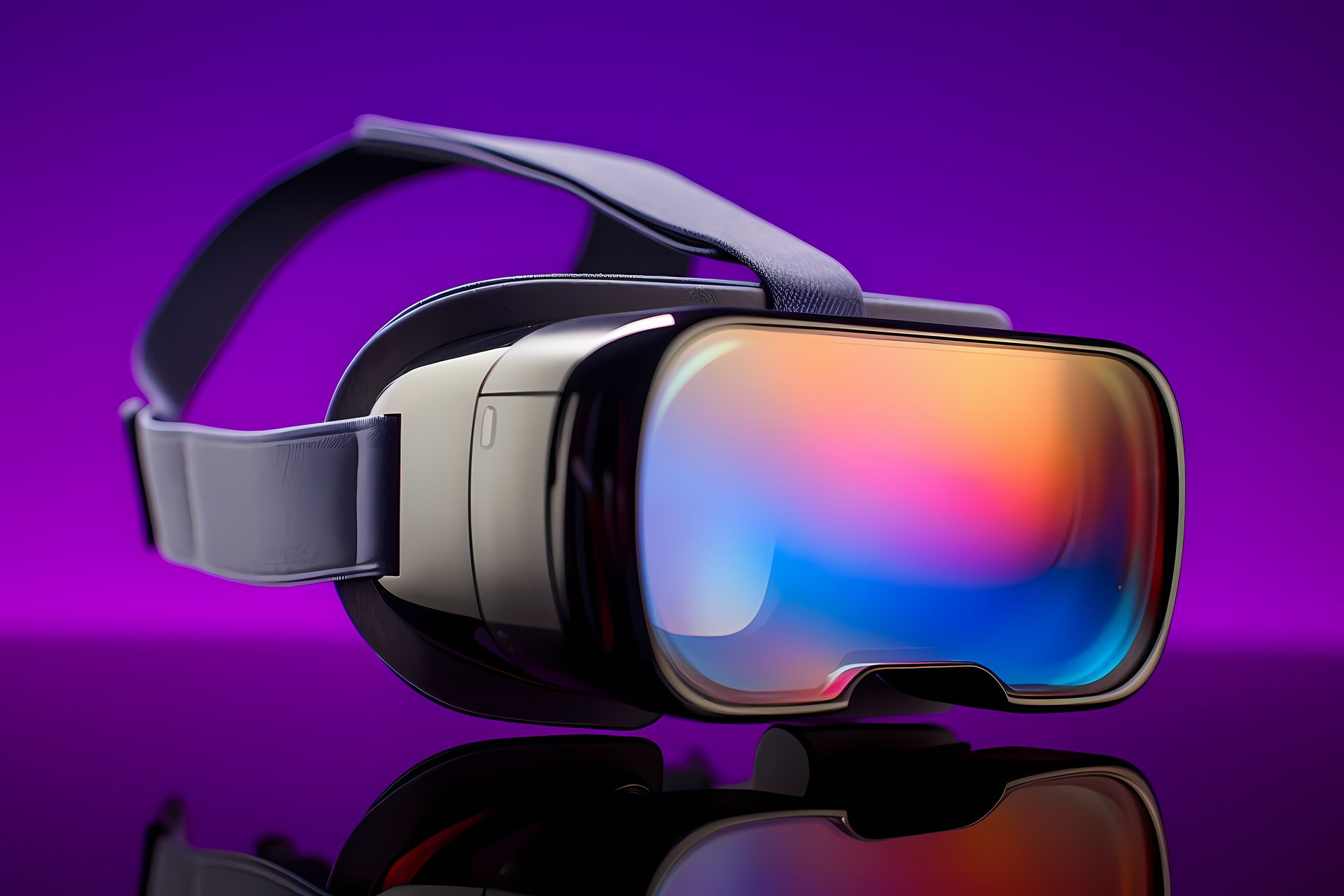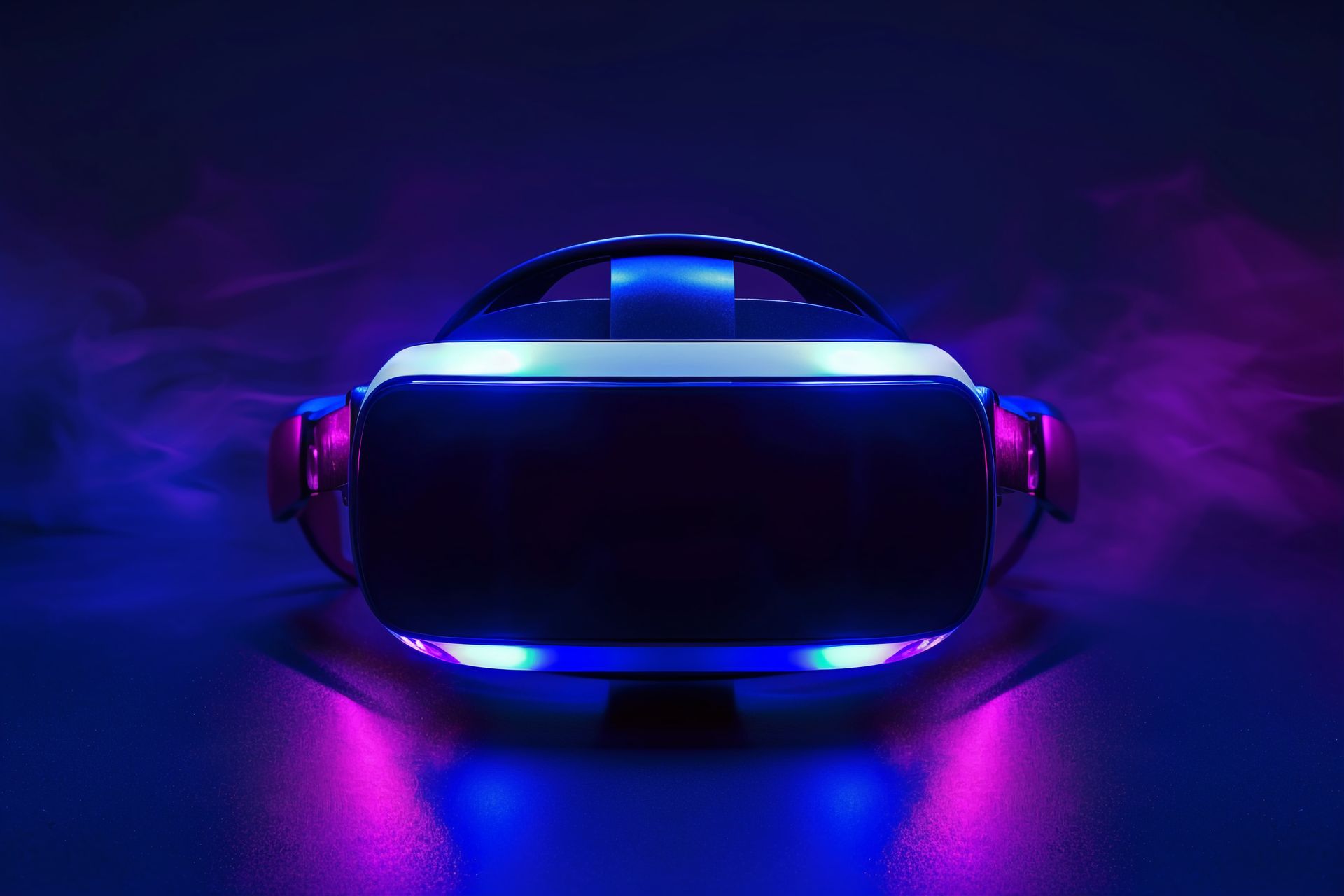In the world of technology, Augmented Reality (AR) and Virtual Reality (VR) have become transformative technologies poised to revolutionize many industries. By improving user interactions and revolutionizing education and training, AR and VR are fundamentally reshaping the way we interact with digital content and our physical environment.
Augmented reality and virtual reality are immersive technologies that are redefining our perception of reality. Augmented reality seamlessly integrates digital information with the real world, while virtual reality immerses users in fully simulated environments. These technologies leverage advanced hardware and software to deliver engaging user experiences, unlocking new possibilities across multiple industries, including healthcare, education, entertainment, and more.
Understanding Augmented Reality (AR)
Augmented reality (AR) enhances real-world environments by seamlessly overlaying digital information in real time. Equipped with cameras, sensors, and displays, AR applications integrate virtual elements into users’ environments to enhance various areas.
In retail, AR is transforming the shopping experience by allowing customers to view products in their own space before purchasing, reducing returns and increasing satisfaction. In education, AR is bringing learning materials to life by allowing students to interact with 3D models of historical objects, dissect virtual objects, or participate in simulated physics experiments in the classroom.
Additionally, in healthcare, AR plays a vital role in improving surgical precision and medical training. Surgeons use AR to visualize patient anatomy in real-time during operations, improving the accuracy and efficiency of operations. AR also supports medical education by providing students with interactive 3D organ models and medical simulations, improving learning outcomes and practical skills in the healthcare sector.
Explore Virtual Reality (VR)
Virtual reality immerses users in computer-generated environments, completely replacing their physical surroundings. VR systems typically include head-mounted displays, motion controllers, and advanced tracking technologies. From gaming and entertainment to professional training simulations, VR offers unparalleled immersion and interactivity.
In entertainment, virtual reality transports you to imaginary worlds where you can interact with characters and environments in ways that were previously unimaginable. A prime example is Valve’s Half-Life: Alyx, which places players in the world of Half-Life through virtual reality. The game not only showcases the potential of VR for narrative-driven experiences, but also demonstrates the immersive capabilities of VR in action-packed gaming scenarios.
Virtual reality games put players in the middle of the action, providing a immersive experience that traditional games can’t match. Beyond entertainment, VR is revolutionizing training programs by simulating high-stakes scenarios for pilots, astronauts, and medical professionals, allowing them to train in safe, controlled environments.
Current trends and innovations
Recent advances in augmented reality and virtual reality technologies are bringing profound changes to various industries, including healthcare. Artificial intelligence and machine learning are revolutionizing the capabilities of augmented reality, enabling real-time object analysis and intelligent interaction. This improves decision-making processes by providing users with immediate and relevant information.
Meanwhile, VR benefits from significant hardware improvements that improve visual fidelity and reduce motion sickness, making VR experiences more comfortable and accessible to a wider audience. These advances are complemented by scalable content creation tools, enabling developers to create immersive experiences that redefine interactions in fields such as automotive design and architectural visualization.
Innovative marketing strategies are also changing the way companies promote their brands. For example, companies are increasingly using creative advertising methods such as car magnets to improve visibility and engage customers on the go. Learn more about car magnets here. And how they can improve your business visibility.
In healthcare, the integration of AR with AI improves diagnostic accuracy by overlaying medical data directly onto surgeons’ views during procedures. This technology not only improves surgical outcomes, but also advances medical education and patient care. Similarly, VR applications in telemedicine expand access to specialized treatments through virtual consultations and therapeutic interventions, thereby improving healthcare delivery and patient outcomes.
Comparison between augmented reality and virtual reality
While both AR and VR enhance your experience through immersion, they serve distinct purposes and have unique applications. AR enriches real-world interactions by adding digital layers, making it ideal for improving productivity, education, and retail experiences. For example, AR in retail environments can personalize shopping experiences by overlaying product information, reviews, and promotions directly onto physical items.

In contrast, virtual reality transports users into entirely virtual environments, making it ideal for simulations, gaming, and immersive storytelling. VR’s ability to create immersive narratives and interactive experiences is unparalleled, providing users with a sense of presence and engagement that goes beyond traditional media.
Each technology has its own strengths and limitations. Augmented reality benefits from real-world context and user interaction, but faces challenges in maintaining seamless integration with physical environments and addressing issues such as field-of-view limitations and device portability. Virtual reality excels at creating immersive experiences, but requires more powerful hardware and can lead to sensory isolation with prolonged use.
Challenges and Considerations
Despite their transformative potential, AR and VR face challenges. Technical hurdles, such as device affordability, battery life, and content quality, remain significant barriers to widespread adoption. Ethical concerns about data privacy, digital addiction, and the psychological impact of prolonged immersion also require attention as these technologies become more widespread.
Regulatory frameworks must evolve to respond to these challenges while fostering innovation and protecting user rights. Content creation standards, user safety, and ethical guidelines are essential to ensure the responsible development and deployment of AR and VR technologies.
Future predictions
Looking forward, The future of augmented reality and virtual reality looks bright.Continued advances in hardware, software, and content creation tools will drive adoption across all industries.
AR's potential to enhance everyday experiences — from shopping and navigation to education and healthcare — makes it a valuable tool for businesses and consumers alike.
The evolution of VR toward more immersive and socially integrated experiences will expand its applications beyond gaming and entertainment. Collaborative VR environments could revolutionize remote work, education, and social interactions, bridge geographic gaps, and enable new forms of digital communication.
Embracing the Future: Augmented Reality and Virtual Reality Redefine Industries
Augmented reality and virtual reality are not just technologies of the future, they are transformative tools that are shaping the way we perceive and interact with our world. As innovation accelerates and adoption grows, the impact of AR and VR on industries and our daily lives will continue to grow. Whether improving education, revolutionizing healthcare, or redefining entertainment, AR and VR are at the forefront of the digital revolution, promising a future where the boundaries between the virtual and real worlds will continue to blur.
Featured Image Credit: Freebeak

“Certified gamer. Problem solver. Internet enthusiast. Twitter scholar. Infuriatingly humble alcohol geek. Tv guru.”





